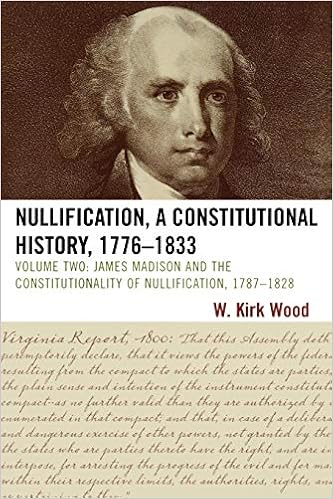
The northeastern United States of the late 1820s were sufficiently prosperous to have a large group of “substantial citizens” . . . manufacturers and journalists interested in the cause of domestic industry, and their purpose was to influence the passage of a new tariff act.” For the most part these men were industrialists and focused on increased profits, not national stability.
The South was in economic distress at the time and the new, higher tariff “seemed to end once and for all any prospect of relief, and many [Southerners] were ready for outright rebellion, even as New England had been in 1814.”
For South Carolina to nullify a federal law it viewed as obnoxious and injurious to its citizens, was a full expression of the Tenth Amendment — inserted into the Constitution for an obvious purpose. The next logical step of an injured State would be peacefully withdrawing from a political union which no longer fulfilled the purposes for which it was formed. And if withdrawal was met with violence, revolution was next.
www.Circa1865.org The Great American Political Divide
The American Right of Revolution
“Controversial as Nullification was in the absence of original records before 1828-1833, Americans still continued to believe in federalism and States’ rights. In the words of Alexander Johnston, “Almost every State in the Union in turn declared its own sovereignty and denounced as almost treasonable similar declarations by other States.”
Herman V. Ames in fact compiled a “collection of documents on the relation of the States to the Federal Government” in 1911. They were “selected especially,” he observed, “with a view to illustrate the development of the “compact theory” of the Constitution and the doctrine of “State Rights,’ State opposition to the Federal Judiciary, and the different phases of the slavery controversy, culminating in the secession movement.”
That we believe otherwise today, in Nullification’s unconstitutionality and [John C.] Calhoun’s and the South’s apostasy from the beliefs of the founders and framers, is explained by another and longer era of historical amnesia by which original intentions as described herein in length were not so much forgotten as between 1789 and 1819, but purposely misinterpreted both to nullify the Nullifiers of South Carolina and to establish a mythical history for a new nation in the making that was the central development of the years after the War of 1812 and until the Civil War.
While this more liberal-democratic-egalitarian-nationalist America was yet inchoate as the confused politics of the 1820s and 1830s inform us, it was there nonetheless in Jacksonian Democracy and nationalism and radical abolitionism which were, it is forgotten, minority movements. The union of the States persisted with the 18th century Whig-republican ideology still extant as the core set of beliefs within the misnamed Democratic party that was really republican with a small “r.”
The liberal-in-a-neo-Hamiltonian sense-Whigs of the 19th century co-existed long enough to make party politics interesting and popular and the preserve the old union of the States. If not republicans, most Americans before the Civil War remained at least federalists. Nullification may have come and gone, but the “right of revolution” continued to be accepted as an original intention and the ultimate means to preserve liberty.”
(Nullification, A Constitutional History, 1776-1833, Volume II: James Madison and the Constitutionality of Nullification, 1787-1828, W. Kirk Wood, University Press of America, 2009, excerpts pg. 105)

No comments:
Post a Comment